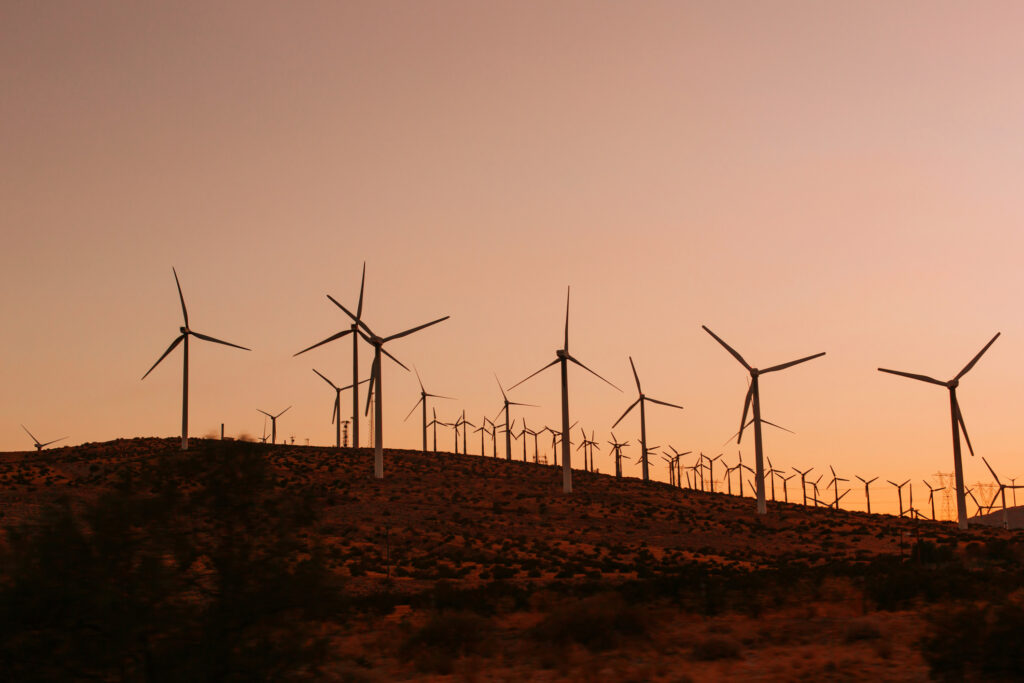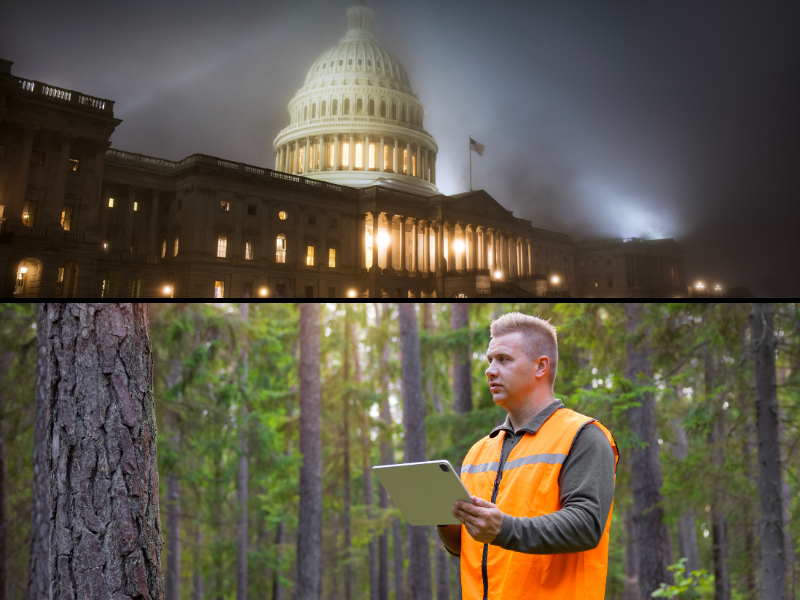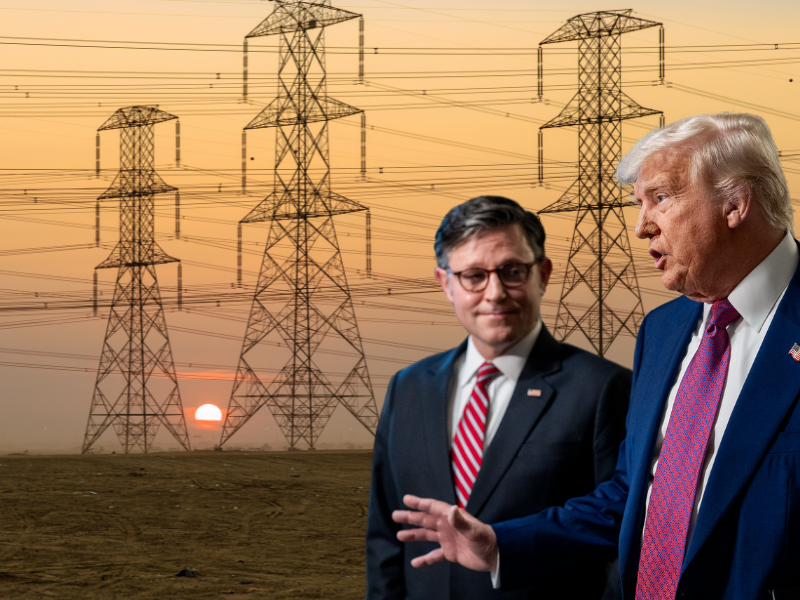IN THIS ISSUE:
- GAO Questions Biden’s Offshore Wind Effort, Vindicates Critics
- IPCC Climate Models Aren’t Useful for Forecasting
- New Volcano Discoveries Upend IPCC’s Human-Caused Climate-Change Narrative
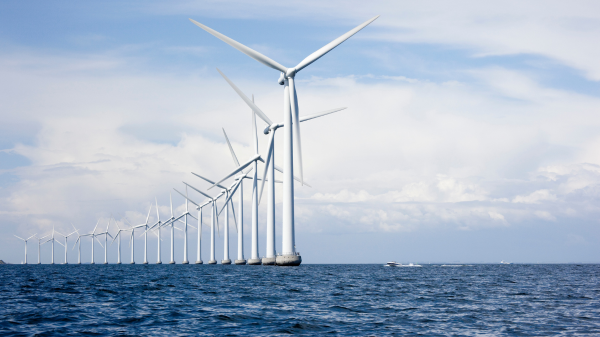
GAO Questions Biden’s Offshore Wind Effort, Vindicates Critics
An April 2025 report by the U.S. Government Accountability Office (GAO) affirms what critics of President Joe Biden’s wind-energy spree have long argued: offshore wind is an expensive, environmentally damaging solution in search of a problem. Offshore wind is neither necessary nor justified to fight climate change or for any other purpose other than to line the pockets of politically connected corporations and to please virtue-signaling politicians who are pushing it as part of the effort to prevent climate change.
The GAO’s report was produced against a background of changing fortunes for offshore wind. The Biden administration pushed offshore wind as part of its all-of-government effort to fight climate change, pushing to expedite more than 30,000 megawatts of offshore wind with relatively little review or concern about the broader impacts of the technology on the environment, wildlife, and the economy. I have previously written about the dangers of Biden’s offshore wind ambitions and the complications that stymied a large percentage of the offshore leases Biden issued. In fact, The Heartland Institute has joined our friends at CFACT as a party to a long-running lawsuit to block a wind project off the coast of Virginia.
Despite the political, environmental, and economic headwinds, the Biden administration pushed stubbornly along with its offshore wind initiatives. “As of January 2025, [the Bureau of Ocean Energy Management] had granted 39 offshore wind leases to commercial developers,” the GAO study reports.
While many of the projects had already been abandoned or delayed due to economic concerns, many others continued on, until most, but not all, came to a crashing halt with the swearing in of Donald Trump as president. On multiple occasions, Trump has publicly stated he hates offshore wind, calling the large industrial developments “ugly,” “horrible,” “expensive,” and “not good,” and he issued an executive order temporarily halting offshore wind development and leasing.
Against this backdrop, the GAO examined the potential benefits and drawbacks of offshore wind:
As the pace of offshore wind development has accelerated, state and local communities, Tribes, and nongovernment entities could experience the potential effects of offshore wind development.
GAO was asked to review offshore wind development in federal waters. This report examines (1) what is known about the potential impacts of offshore wind energy development, and (2) what mechanisms BOEM, in coordination with other agencies, has in place to oversee offshore wind energy development and to what extent they address potential impacts. …
[U]ncertainty exists about long-term and cumulative effects, and the extent of impacts will vary depending on the location, size, and type of offshore wind infrastructure. …
Among such impacts, development and operation of offshore wind energy facilities could affect marine life and ecosystems, including through acoustic disturbance and changes to marine habitats. Wind development could bring jobs and investment to communities. At the same time, it could disrupt commercial fishing to varying degrees. Turbines could also affect radar system performance, alter search and rescue methods, and alter historic and cultural landscapes.
The GAO examined the potential positive and negative impacts of offshore wind on climate and public health; marine life and ecosystems; the fishing industry; economic and community development; tribal resources; defense and radar systems; and maritime navigation and safety.
The GAO seems to think the DOD had significant input into the offshore wind siting and operations and is satisfied that the industrial wind facilities thus far permitted will not hamper national security or military readiness. For every other category, by contrast, significant uncertainties remain, and GAO argues many of the siting and permitting decisions were not made transparently, with input from affected parties such as tribes and the fishing industry solicited but evidently ignored.
Will offshore wind improve public health or mitigate climate change as the Biden administration claimed? The GAO says the question is still open and any benefits are uncertain. Will the offshore wind facilities harm marine life? Once again, the experts assembled by the GAO are unsure. Marine species might be harmed, even killed, directly or indirectly by the impact on habitat and prey species, but they can’t be sure. Will communities benefit economically or otherwise? It depends. The point is, it is unclear, after examining the GAO’s review, whether the substantial costs and possible negative impacts of offshore industrial wind will produce any real-world benefits to the wider community beyond those accruing to the corporations and politicians profiting from them.
In addition, the GAO noted the government failed to establish an effective monitoring and enforcement mechanism to ensure permit requirements were followed and actions and damages not allowed in the permits are avoided and/or punished if they occur.
One thing that is clear is that the permitting process was expedited for political reasons and lacked transparency, and the public input process was truncated. GAO recommends the following:
- improving tribal consultation transparency,
- documenting how fisheries’ concerns are incorporated,
- issuing enforceable standards for community engagement,
- establishing regional field offices, and
- requiring data-sharing for environmental monitoring.
Trump should halt all offshore wind activity until all of GAO’s concerns are answered and the uncertainties about the environmental, historic, and economic damage these facilities might cause are clarified.
Sources: Watts Up With That; U.S. Government Accountability Office
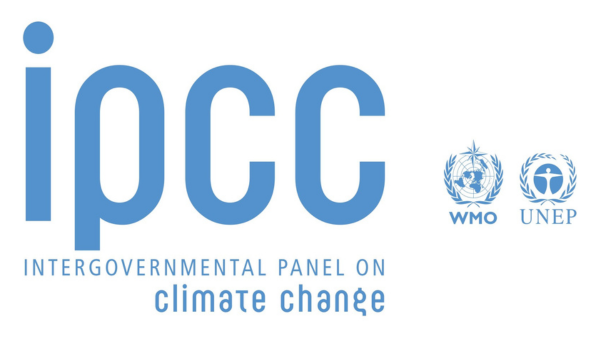
IPCC Climate Models Aren’t Useful for Forecasting
A new study published in the journal Science of Climate Change examines the history of back-cast tracking of climate conditions and predicted outcomes from the climate models used by the U.N. Intergovernmental Panel on Climate Change (IPCC) and reports they regularly produce outcomes and scenarios based on the claim that greenhouse gas concentrations drive climate changes that don’t match measured or experienced conditions.
By comparison, simpler models that use independent measurements of volcanic and solar activity track climate conditions better than those that use estimated anthropogenic forcing and feedback mechanisms as the IPCC’s do.
This study notes the IPCC asked two questions early on: the cause(s) of recent warming (the attribution problem) and the impacts of warming (forecasting or predictive validity). The IPCC’s mission was biased toward human causes from the outset due to their charge by the U.N. authorities, the authors note:
The IPCC were tasked with identifying the effect of human activity on global and regional surface temperatures. Chapter 8 of the IPCC’s Second Assessment Report—titled, “Detection of Climate Change and Attribution of Causes”—opens with the statement “Since the 1990 IPCC Scientific Assessment considerable progress has been made in attempts to identify an anthropogenic effect on climate” (p. 411, Santer et al., 1996). Other statements in the chapter summary indicate the authors’ reservations regarding the state of knowledge on human influences on climate: e.g., “…large uncertainties still apply to current estimates of the magnitude and patterns of natural climate variability…” and “Our ability to quantify the magnitude of this effect is presently limited by uncertainties in key factors, such as the magnitude of longer-term natural variability and the time-evolving patterns of forcing and response to changes in greenhouse gases, aerosols and other human factors” (p. 411, Santer et al., 1996).
In their attempts to achieve the IPCC objective of identifying a human cause for temperature changes—specifically “global warming”—the IPCC researchers have framed the problem as one of “attributing” changes in the Earth’s temperature to the respective contributions of putative anthropogenic (“Anthro”)—principally carbon dioxide emissions altering the composition of the atmosphere—and natural influences—principally aerosols from volcanic eruptions altering the composition of the atmosphere (“Volcanic”), and total solar irradiance, or TSI, variations (“Solar”). Given the task they were set, the IPCC researchers have devoted much of their efforts into developing estimates of the Anthro variable.
Charged with studying anthropogenic factors driving climate change, they downplayed nature’s role, admitting across various reports they had a poor understanding of volcanic activity, solar activity, clouds, and large-scale ocean currents. Despite admitting these factors and others had some impact on climate, they didn’t study them, and they downplayed their importance, relegating them to a minimal impact on present warming. The focus of the research and the judgment of the role that largely unstudied (by the IPCC) and unaccounted-for “natural” factors on climate change is unwarranted by the evidence, including the models used in this research, largely suggesting the opposite, assuming no or minimal anthropogenic role in present global climate, and instead modelling the influence of volcanic activity and different types of solar influences.
The study found models controlling for anthropogenic greenhouse gas emissions while focusing on volcanic and solar impacts had better predictive capabilities when tested against measured conditions over time than the CO2-driven models the IPCC used. Based on this finding, the study’s authors conclude the following:
The IPCC’s models of anthropogenic climate change lack predictive validity. The IPCC models’ forecast errors were greater for most estimation samples—often many times greater—than those from a benchmark model that simply predicts that future years’ temperatures will be the same as the historical median. The size of the forecast errors and unreliability of the models’ forecasts in response to additional observations in the estimation sample implies that the anthropogenic models fail to realistically capture and represent the causes of Earth’s surface temperature changes. In practice, the IPCC models’ relative forecast errors would be still greater due to the uncertainty in forecasting the models’ causal variables, particularly Volcanic and IPCC Solar.
The independent solar models of climate change—which did not include a variable representing the IPCC postulated anthropogenic influence—do have predictive validity. The models reduced errors of forecasts for the years 2000 to 2018 relative to the benchmark errors for all, and all-but one, of 101 estimation samples tested for each of the two models. …
The independent solar models provide realistic representations of the causal relationships with surface temperatures. The question of whether the independent solar variables can be forecast with sufficient accuracy to improve on the benchmark model forecasts in practice, however, remains relevant. All in all, and contra to the IPCC reports, there is insufficient evidential basis for the use of carbon dioxide, et cetera, emissions—taken together, the IPCC’s Anthro—as climate policy variables.
Even though the forecasts of the simpler models assuming climate change driven largely by solar factors and volcanic activity improve the projections, the researchers involved in the study do not recommend using either set of models to justify policy decisions: uncertainty of future conditions is simply too great. They write,
The anthropogenic models’ unreliability would appear to void policy relevance. In practice, even the models validated in this study may fail to improve accuracy relative to naïve forecasts due to uncertainty over the future causal variable values.
Source: Science of Climate Change
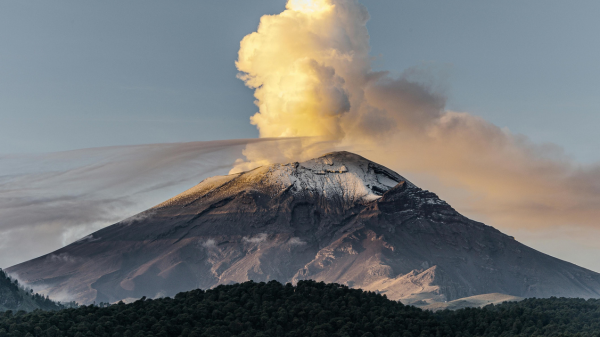
New Volcano Discoveries Upend IPCC’s Human-Caused Climate-Change Narrative
Recent studies reveal volcanoes are more numerous and have greater impact on the climate than either climate models or the United Nations’ Intergovernmental Panel on Climate Change recognize or acknowledge. The IPCC claims to be the authoritative body on climate change.
A study published in Science Advances by an international team of researchers from the U.K., Italy, and the West Indies, led by researchers from the University of Manchester, found climate scientists underestimate CO2 emissions from volcanoes by a substantial amount. In fact, the paper concludes volcanoes might well emit three times more CO2 annually than climate modelers and climate researchers assume. That means if overall measurements of atmospheric concentrations are accurate, the amount attributable to human activities is likely lower than previously assumed.
The scientists involved in the research “developed an advanced sensor that can detect volcanic gases with rapid speed and precision,” according to the University of Manchester’s press release.
The researchers attached the sensor to a helicopter and flew it over the Soufrière Hills Volcano on the Caribbean Island of Montserrat. Commonly, emissions from volcanoes are measured by monitors at hot vents or fumaroles. The new technology allows researchers to measure emissions from cooler fumaroles tempered by hydrothermal systems which absorb select gases. Because of the limits of the commonly used technologies and their location, carbon dioxide emissions from copious cooler fumaroles go unmeasured, resulting in a significant undercount of atmospheric CO2 and other gases and chemicals that volcanoes emit.
“Volcanoes play a crucial role in the Earth’s carbon cycle, releasing CO₂ into the atmosphere, so understanding the emissions is crucial for understanding its impact on our climate,” stated Alexander Riddell, lead author of the study, in the press release. “Our findings demonstrate the importance of fast sampling rates and high precision sensors, capable of detecting large contributions of cooler CO2-rich gas.”
In another study, published in Earth and Space Science, a team of scientists from universities and research institutes in the United States and South Korea undertook a new survey of seamounts—active and dormant volcanoes on the ocean floor. Only a quarter of the ocean floor has been mapped, and traditional research on seamounts counted only those rising 1,000 meters or more from the seabed. The new research examined the sea floor anew, using statistical measurements of vertical gravity gradient—the measurement of the curvature of the ocean surface topography derived from satellite altimeter measurements—to update existing surveys including smaller but still important, often active, seamounts. Even without surveying the entire sea floor, the researchers discovered 19,000 new seamounts to add to the existing catalog of more than 29,000.
Even if one believes undersea thermal vents and volcanoes only minimally affect ocean temperatures—a debatable and understudied proposition—and then only locally, the number and activity of seamounts are important in understanding climate change because they affect large-scale ocean currents, retain heat, and sequester CO2.
Study coauthor John Lowell, chief hydrographer of the U.S Department of Defense’s National Geospatial-Intelligence Agency, explained to the journal Science why understanding and mapping seamounts is important: “Their size and distribution hold clues to plate tectonics and magmatism. … They are crucial oases for marine life,” Science summarized Lowell as saying. “And they are pot-stirrers that help control the large-scale ocean flows responsible for sequestering vast amounts of heat and carbon dioxide”
If the findings of these studies are confirmed, it would mean that assumptions of ambient carbon dioxide other than through human contributions are flawed, as are climate model assumptions about them. In addition, it would mean climate models’ current understanding of ocean currents and heat retention in the oceans are woefully inadequate to the task of ruling out significant oceanic influence on climate change. These two studies reinforce what I have maintained across numerous Climate Change Weekly posts, that basing public policies on climate models’ projections is unjustified. There are just too many factors climate models fail to properly account for to blame current climate change solely or primarily on human actions, and therefore to assume that cutting carbon dioxide emissions will mitigate or reduce climate change is unjustified.
Sources: Watts Up With That; University of Manchester; Science


